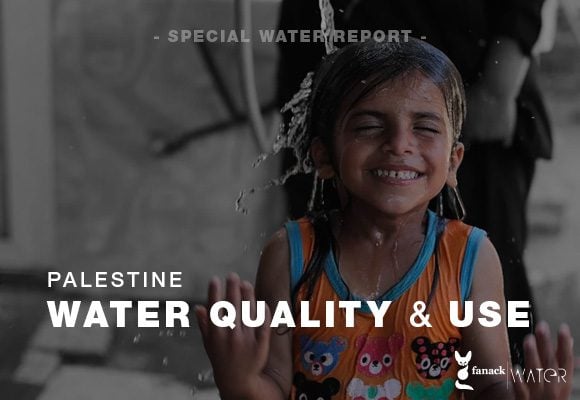The sheer scope of destruction suggests a strategy of spatial erasure, aiming to dismantle communities and sever ties to their cultural heritage. Yet, amidst the horror, the people of southern Lebanon show remarkable resilience, vowing to rebuild and reclaim their homes and histories despite the profound loss they endure.

Noor Sleiman
This article was translated from Arabic to English
“We were launching these missiles against Israel,” a man standing amidst the rubble of the Nabatieh municipality building in southern Lebanon sarcastically says. “They are made of bags of rice, baby diapers, and medicine.”
A crisis cell was meeting there to support the residents of the town who had remained amidst the unprecedented levels of Israeli aggression in recent weeks. On the morning of Wednesday, October 16, Israeli warplanes launched over 11 airstrikes, forming a ‘ring of fire’ around Nabatieh.
The attacks claimed the lives of 14 people, including Nabatieh’s mayor, Ahmad Kahil; a member of the municipality; its media officer; and two other employees. In addition, 43 people were injured, among them five members of the Civil Defense.
The Israeli army stated that the strikes targeted Hezbollah positions, a claim it reiterates each time it strikes and destroys residential neighborhoods, populated buildings, hospital vicinities, ambulances and even journalists in Lebanon. This narrative seeks to justify the targeting of civilians by attempting to revoke their civilian status.
Mohammad (a pseudonym), a volunteer at the municipality and a witness to the massacre, has a different account. For his own safety, he has chosen to remain anonymous.
“Everyone in the targeted buildings was a civilian. We gathered every morning to distribute aid to the townspeople, including bread, vegetables, and medicine,” Mohammad told Fanack. “A number of elderly people would come to the municipality on a daily basis to collect bread. If they had come that day, the massacre would have been far worse. The building we were in was bombed without warning.”
Mohammad miraculously survived because he was outside the building when the strike occurred. However, he remains in shock from the attack, which reduced the building to rubble within seconds and killed many of his colleagues, who shared in the daily humanitarian efforts amid the war.
The Nabatieh municipality building was among the civilian structures that international law prohibits from being targeted. Yet, it is the fourth such building destroyed by Israeli airstrikes, following the municipalities of Kfar Kila, Bint Jbeil, their union of municipalities in southern Lebanon, and Qaliya in the western Bekaa. Ahmad Kahil became the third mayor to be killed since the escalation began on October 8, 2023.
In a blatant and repeated violation of international law, paramedics and ambulances, particularly in southern Lebanon, are being deliberately targeted. According to the Ministry of Health, these attacks have resulted in the deaths of more than 168 paramedics and health workers, the wounding of over 275 others, and the destruction of 158 ambulances. These acts constitute war crimes.
Also, in a continued violation of international law and the laws of war, Israeli army spokesperson Avichay Adraee regularly threatens ambulances, claiming they are used to “transport terrorists and weapons.” Despite offering no evidence to support these claims, he has confirmed the army’s intent to target ambulances, attempting to frame paramedics and their vehicles as legitimate targets amid the international community’s failure to hold Israel accountable for its actions.
Despite the threats and intimidation, paramedics remain undeterred, risking their lives to continue rescue operations under fire. Among them is Mohammad Suleiman, head of the emergency and training department at the Nabatieh Paramedics Unit.
Mohammad shared with Fanack the harrowing conditions under which the ambulance teams operate: “We work under relentless airstrikes, witnessing unprecedented destruction, countless martyrs and horrifying scenes every day. Every rescue effort within each town puts us at imminent risk, making us feel as if we are staring death in the face. Once, while retrieving bodies and searching for the wounded in Nabatieh in the wake of yet another massacre, we were targeted by an airstrike, which resulted in injuries among our paramedics.”
Comparing the current conflict to the Israeli war on Lebanon in July 2006, Mohammad considers the ongoing war far more violent and destructive, especially with the repeated targeting of civilians and paramedics. “The scale of Israeli crimes in this war is terrifying,” he says. Nonetheless, he and his colleagues have chosen to remain in Nabatieh, resolute in their decision not to abandon their land or their people.
Intisar Yassin, 57, had been living alone in her home in the southern provincial capital, unableto find a safe location to evacuate before the large-scale Israeli attacks began.
“The ambulance teams evacuated me from my home and took me to a nearby hospital. It was impossible to stay after the people who used to visit and provide me with aid and food were martyred in the airstrike on the municipality building,” Yassin says, holding back tears.
Abdul Nasser Jaber, 60, was also forced to flee his home. He told Fanack that he had tried to survive in the town for as long as he possibly could, but the extent of the destruction and the deaths of municipal workers and paramedics deeply affected him on a psychological level.
“The destruction in the city is beyond words. The warplanes and reconnaissance aircraft are constantly overhead, and I can’t sleep. I feel like I’m losing my mind,” Jaber said.
Half an hour before the Israeli airstrikes pummeled Nabatieh, Jaber was on the phone with member of the Nabatieh Municipality Hajj Sadiq Issa, seeking assistance with water shortages in his house. “He promised to resolve the issue within half an hour, but he was martyred.”

Intisar Yassin and Abdul Nasser Jaber’s statements provide compelling evidence that the Israeli army’s systematic targeting of governmental institutions, crisis cells, and paramedics is meant to destroy all forms of resistance in southern communities. The objective appears to be the complete annihilation of their prospects of life, as well as the forcible displacement of communities.
Widespread Urban Destruction
On the evening of Saturday, October 12, Nabatieh bore the brunt of Israel’s destructive military campaign, with a series of airstrikes that devastated the city’s commercial market, erasing its once-vibrant features. Once the beating heart of the city and its economic center, the old souk was reduced to rubble.
Residents of Nabatieh mourned the loss on social media, recalling the shops, restaurants, clothing and jewelry stores, libraries and cafés where they gathered to meet friends and neighbors. These streets and landmarks had been woven into the fabric of the town’s collective memory.
According to Nabatieh researcher Ali Mazraani, the market, which is over 500 years old, dates back to the Mamluk era. He explained in an interview with Fanack that the market was “the foundation of the social and cultural fabric of the city and the surrounding towns. It has historically been a center of cultural and economic activity and played a key role in uprisings against French, British and Israeli occupation.”
Mazraani pointed out that this is not the first time the market has been subjected to Israeli attacks. “It was bombed in 1978 and damaged during the Israeli invasion of 1982, as well as the wars of 1993, 1996 and 2006. However, this time the destruction was the most severe. Along with the devastation of other adjacent buildings, some 200 shops—some of which had been in business since the 1930s and had been handed down through the generations—were totally destroyed.

“We feel that life has come to a halt in Nabatieh after the destruction of its market,” Mazraani added. “It will be very difficult to recover the memories and heritage that were erased.”
The devastation in Nabatieh is part of what can be understood as spatial genocide, or urbicide – the systematic destruction of urban areas and landmarks. Israel’s campaign in Lebanon follows a similar strategy seen in Gaza, where deliberate large-scale violence is employed to obliterate the physical and cultural identities of cities.
This strategy is not just aimed at demolishing buildings; it seeks to erase cities’ landmarks, sever the ties between people and their hometowns, destroy their memories and dismantle the social and economic fabric of communities. By making these places uninhabitable, it ensures that residents cannot return after the war ends.
Israel’s retaliatory tactics in southern Lebanon have reached the point of booby-trapping and blowing up entire towns, particularly those near the border. Aerial footage shows the extent of the devastation – towns, once home to hundreds of thousands of people, reduced to scorched earth.
While the Israeli army claims these bombings are part of its ground military operations against Hezbollah, the destruction has extended beyond military targets. The city of Tyre, more than 15 km from the Lebanese-Israeli border, has been subjected to dozens of daily airstrikes. Even areas close to Tyre’s Roman-era ruins, a UNESCO World Heritage site, have not been spared. This violation of the laws of war and UNESCO agreements, which grant international protection to these sites within a 500-meter radius, highlights the indiscriminate nature of the destruction.
In a heart-wrenching interview on Lebanon’s Al Jadeed TV, journalist Hussein Ayoub shared the personal toll of the war. “My wife just received news that her border town of Adaisseh was completely wiped out, along with her parents’ home, where her father and mother are buried. My mother’s grave in Ainata was also destroyed. It reminded me of the July 2006 war when my father’s grave was destroyed as well.”
In southern Lebanon, even the dead are not spared the violence. Yet, Ayoub offers his wife a message of resilience: “Don’t be sad. We will return to our villages, rebuild our homes, and they will be more beautiful than they were before.”


